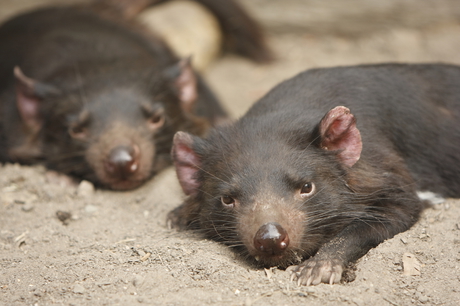Trialled in the wild — the Tasmanian devil vaccine

Nineteen Tasmanian devils, who were recently immunised against the deadly devil facial tumour disease (DFTD), have been released into Narawntapu National Park as part of a program to test the vaccine in the wild for the very first time.
Previous trials of the vaccine have taken place in the laboratory at the Menzies Institute for Medical Research at the University of Tasmania, where it was developed in collaboration with CSL. Associate Professor Lynn Corcoran and Dr James Murphy, both from the Walter and Eliza Hall Institute of Medical Research, assisted in the project.
“The tumours are able to effectively ‘fly under the radar’ and evade immune detection,” Associate Professor Corcoran said. “We developed tools to measure antibody responses and produced natural devil proteins that stimulate tumour cells to ‘reveal’ themselves to the immune system.”
According to Menzies immunologist Professor Greg Woods, the devil research team was able to activate an immune response against cancer cells in 18 of the 19 vaccinated devils. “This is an excellent outcome,” he said, “but the real test will be determining whether the vaccine is effective in protecting devils in the wild — hence the release at Narawntapu.”
Professor Woods said the 19 devils will be monitored after their release and regular blood samples will be collected to confirm that the immune response is still active — if not, the devils may require a booster. The monitoring process will additionally be used to assess the impact of the immunised animals on the local devil population.
Menzies is working in partnership with the Save the Tasmanian Devil Program (STDP), as well as national and international scientific collaborators, to help achieve the Tasmanian devil’s long-term survival in the wild. The role of the STDP is to assess the condition of the wild devil population in the state’s north-east, explore ways to rebuild disease-affected populations and coordinate management of wild devils. The release of the immunised devils thus marks an exciting new step for the program.
Found: the most massive stellar black hole in the Milky Way
With a mass 33 times that of the Sun, and based a mere 1926 light-years away, Gaia BH3 is the...
Astronauts will soon grow plants on the Moon
When humans take their first steps back on the Moon after 50 years during the Artemis III...
How plant leaves ensure optimal area for photosynthesis
The small RNA molecules in the cells of the growing leaf set in motion a genetic process that...







